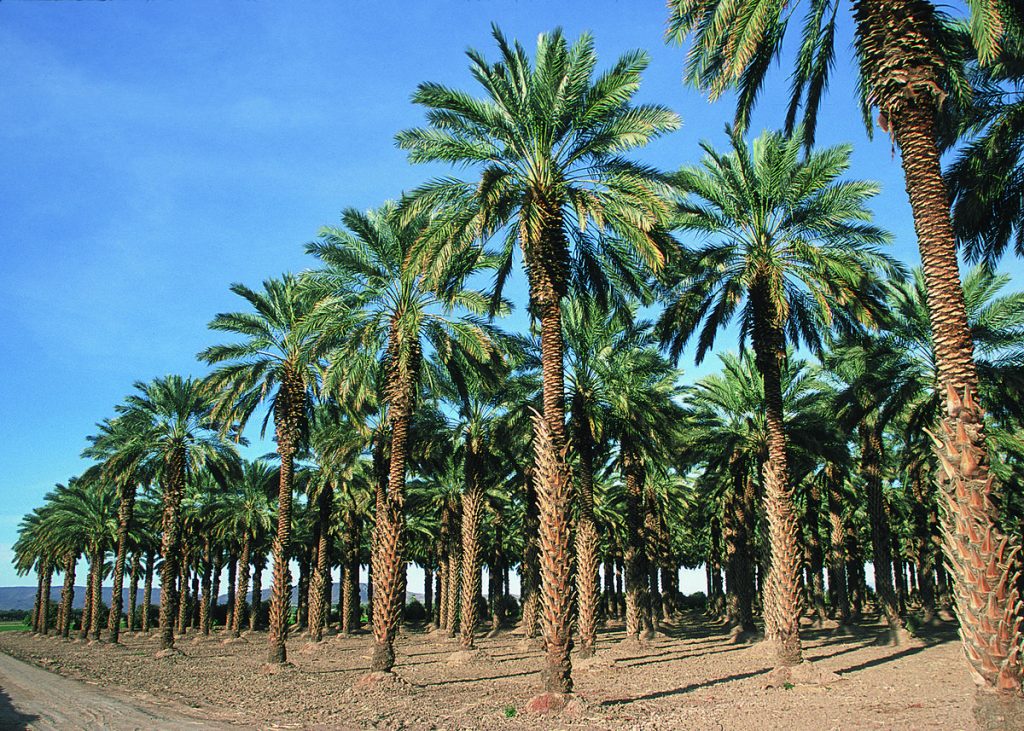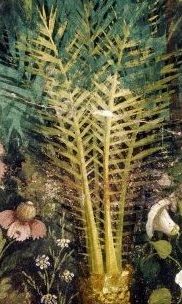
Date palm is a tender evergreen tree that probably orginated in the Fertile Crescent and has been cultivated since 7,000 BC. It is a member of the palm family, Arecaceae, that also includes coconut and palmettos. Carbonized dates have been found in the ruins of Pompeii but were probably imported. The ancient Roman naturalist, Pliny the Elder (d 79 AD), tells us in his Natural History that the date palm was common in Italy but did not bear fruit due to insufficiently hot temperatures. Pliny also tells us about the medicinal use of date palm and its value for wine making. The wall paintings of the houses in ancient Pompeii frequently include date palm, either in Nilotic scenes or as a symbol of triumph and victory. The tree was usually shown with its old foliage removed to show its new growth. Photo Credit Wiktionary

Description: The trees grow up to 75′ tall and have one to several stems carrying pinnately compound leaves 13-20′ long. Each leaf has spines on their petioles and up to 150 leaflets that are up to 12″ long. The leaves are produced at the stop of the stems and form a crown that is 20-33′ across. Spikes of small white male and female flowers are produced in the axils of the leaves on different plants and fertilized female flowers give way to yellow to red, oval fruits that are 1-3″ long and very sweet. Date palms are grown as street trees as well as for shade and fruit, and may be grown in a container as a patio or house plant.
Size: 69-75′ H x 20-40′ W
Light: Full sun
Soil: Average, deep sandy well drained loam with medium moisture and ph 8-11
Hardiness: Zones 9-11